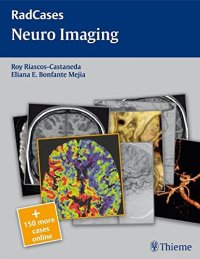
Ebook: Radcases Neuro Imaging
Author: Bonfante Eliana, Riascos Roy
- Tags: Nervous system, Radiography, Case studies., Nervous system, Radiography
- Series: RadCases
- Year: 2011
- Publisher: Thieme
- City: New York
- Edition: 1 Pap/Psc
- Language: English
- pdf
This book is not intended to teach neuroradiology--it is only a review of the most frequent pathologies and serves as a tool to be able to tell them apart. Of course, telling them apart is not always possible, and that is the whole trick of giving a pertinent set of differential diagnoses and trying to favor one over the other. Our advice is to always look at the first image and try to describe as much as you can, Read more...
Abstract: This book is not intended to teach neuroradiology--it is only a review of the most frequent pathologies and serves as a tool to be able to tell them apart. Of course, telling them apart is not always possible, and that is the whole trick of giving a pertinent set of differential diagnoses and trying to favor one over the other. Our advice is to always look at the first image and try to describe as much as you can, as if it was the only image you had available, then go through the rest of the images and see if the thought process was similar. It would be impossible to include all the pertinent differential diagnoses for each case with the format limitation of three differential diagnoses per case. This way of teaching imaging analysis can both be similar to and very different from your daily clinical practice. Often, the pertinent finding or telltale sign to achieve a diagnosis lies in just a few of the images within an entire examination; however, you have to see the entire case and find these. Here, images that have been deemed key by someone else are selected, giving you the advantage of a focused search but the limitation of a narrow representation. You may find yourself frustrated by offering a totally different differential diagnosis from the one presented to you here, but be aware that the same case can have a completely different approach based on the way it is presented, the order of the images, or the finding in which you are focusing your process of thought. Additional references are provided to help you widen the scope of your review, especially in subjects that you may find more challenging or controversial--Provided by publisher